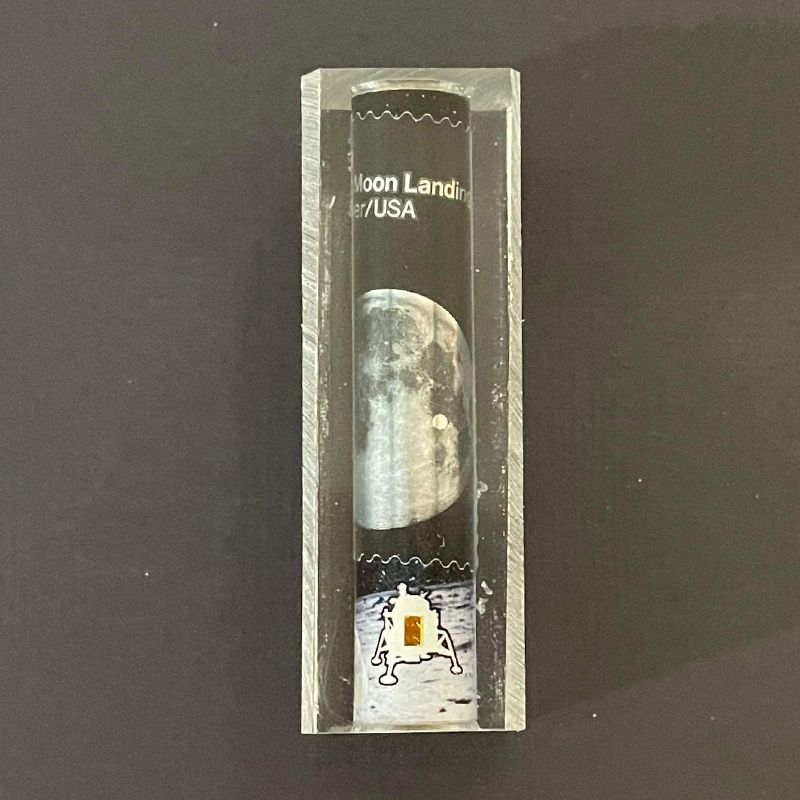NASA Apollo 11 Blanks
NASA Apollo 11 Blanks
Prodcut Base price with no add-on options
Low stock: 5 left
Product Price with any add-on options selected
Couldn't load pickup availability
NASA Apollo 11 blanks.
All blanks will come with one COA per blank.
COAs are 4" x 6" card stock with foil COA seal.
Blank Tube Size Descriptions:
- Jr Series blanks are double tube set 12.5mm tubes and 10.5mm lower tubes
- Sierra Clone blanks are single 27/64" tubes
- Custom single Tube or Double Tube Sets available. (Two Week Delivery) Specify tube size needed in notes at check out.
Apollo 11 was the American spaceflight that first landed humans on the Moon. Commander Neil Armstrong and lunar module pilot Buzz Aldrin landed the Apollo Lunar Module Eagle on July 20, 1969, and Armstrong became the first person to step onto the Moon's surface. Aldrin joined him, and they spent about two hours fifteen minutes together exploring the site they had named Tranquility Base upon landing. While Armstrong and Aldrin collected 47.5 pounds of lunar material to bring back to Earth, pilot Michael Collins flew the Command Module Columbia in lunar orbit. Armstrong and Aldrin were on the Moon's surface for 21 hours, 36 minutes before lifting off to rejoin Columbia.
Apollo 11 was launched by a Saturn V rocket from Kennedy Space Center on Merritt Island, FL, on July 16, and it was the fifth crewed mission of NASA's Apollo program. The Apollo spacecraft had three parts: a command module with a cabin for the three astronauts, the only part that returned to Earth; a service module, which supported the command module with propulsion, electrical power, oxygen, and water; and a two-stage lunar module — a descent stage for landing on the Moon and an ascent stage to move back into lunar orbit.
After traveling three days until they entered lunar orbit, Armstrong and Aldrin then moved into Eagle and landed in the Sea of Tranquility on July 20. The astronauts used Eagle's ascent stage to lift off from the lunar surface and rejoin Collins in the command module. The astronauts returned to Earth and splashed down in the Pacific Ocean on July 24 after more than eight days in space. The Apollo 11 space capsule was recovered by the USS Hornet (CV-12).
This piece of Kapton foil is from a larger section removed from the lunar lander prior to launch, due to a defect in a squib valve. To remove and replace the valve, some of the Kapton thermal blanket had to be removed and replaced. Since this piece was removed prior to launch, it did not fly in space or to the moon. It was an original part of the lunar lander, Eagle, and a fine artifact from the historic Apollo 11 mission.
USS Hornet (CV-12) is an Essex-class aircraft carrier built for the United States Navy (USN) during World War II. After service during both the Korean War and Vietnam War, Hornet was the recovery ship for the Apollo program for both the Apollo 11 and Apollo 12 missions to the moon. She was eventually designated as both a National Historic Landmark and a California Historical Landmark, and she opened to the public as the USS Hornet Museum in Alameda, CA, in 1998.
These blanks were crafted using materials from an original US Postage Stamp #479100 and original Kapton foil from the Apollo 11 lunar lander Eagle, and a wood relic from the deck of the USS Hornet (CV-12). The materials used are certified and distributed by Hardin Penworks, LLC. This material is guaranteed to be 100% Authentic.



Share















